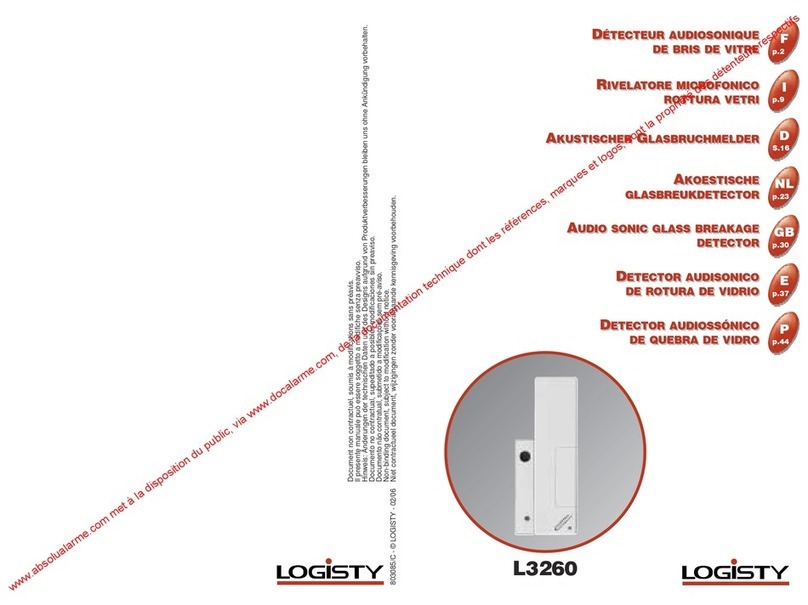G
B
67
Contents Introduction
Introduction ................. 67
Operation principle ...............67
Description............................68
Power supply................68
Personalised radio
house/site code
programming................69
Installing the detector ..70
Choosing the right place ......70
Testing the radio link
at the chosen location ..........71
Mounting ...............................71
Installing several detectors
in a network ..........................72
Detector tests ...............73
Manual disabling
of the detector..............74
Events memory.............75
Indication ......................76
Alerts.....................................76
Faults ....................................76
Maintenance .................77
Detector head
maintenance .........................77
Changing the battery............78
In case of any works
in the room............................78
User sheet.....................79
Technical data ..............81
It is recommended to replace the smoke detector
subject to a regular and normal maintenance
every 10 years. The replacement date is indicated
on back of the product.
Detector transmit-
ting the smoke
detection signal
Other wired
inter-connected
detectors
the LED flashes
quickly
-
a built-in alarm sounds
on a continuous basis
(85 dB(A) at 3m)
a modulated built-in
audible alarm sounds
(85 dB(A) at 3m)
lit
lit
Red signal LED
indicates the state
of the detector
White
indicator
LED Built-in audible alarm
Operation principle
The optical smoke detector is especially suited for detecting
slow-starting fires that may smoulder for several hours before
breaking out. It is designed to protect the private areas of
buildings or apartment blocks and mobile homes.
It can be:
●used as a stand-alone unit,
●integrated into a Logisty alarm system with TwinPass®
control panels L2302F, L3303F, L3305F and L3310F,
●inter-connected in a wired network of up to 40 detectors.
In stand-alone mode, it produces the following alarms and
indications throughout the smoke detection period:
Connected to a Logisty alarm system it also activates imme-
diately smoke is detected:
●triggering of the control panel siren and the alarm sirens in
fire alarm modulation for 5 minutes,
●triggering of the telephone dialler.




























